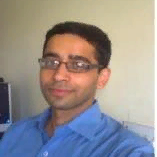
Sumit Budhiraja
Work place: Department of Electronics and Communication Engineering, UIET, Panjab University, Chandigarh, India
E-mail: sumitbudhiraja@gmail.com
Website:
Research Interests: Image Processing, Image Manipulation, Image Compression, Computer systems and computational processes
Biography
Mr. Sumit Budhiraja is an assistant professor in Department of Electronics and Communication Engineering, UIET, Panjab University, Chandigarh, India. His area of interest includes Digital Signal Processing and Image Processing.
Author Articles
Compressive Sensing based Image Reconstruction Using Generalized Adaptive OMP with Forward-Backward Movement
DOI: https://doi.org/10.5815/ijigsp.2016.10.03, Pub. Date: 8 Oct. 2016
Reconstruction of a sparse signal from fewer observations require compressive sensing based recovery algorithm for saving memory storage. Various sparse recovery techniques including l_1 minimization, greedy pursuit approaches and non-convex optimization requires sparsity to be known in advance. This article presents the generalized adaptive orthogonal matching pursuit with forward-backward movement under the cumulative coherence property; which removes the need of knowledge of sparsity prior to implementation. In this technique, the forward step increases the size of support set and backward step eliminates the misidentified elements. It selects multiple indices on the basis of maximum correlation by forward-backward movement. The size of backward step is kept smaller than the forward one. These forward-backward steps then iterate and increment through the algorithm adaptively and terminate with stopping condition to ensure the identification of significant components. Recovery performance of proposed algorithm is demonstrated via simulation results including reconstruction of sparse signals in noisy and noise free environment. The algorithm has major advantage that it does not require the knowledge of sparsity in advance in contrast to the earlier reconstruction techniques. The evaluation and comparative analysis of result shows that algorithm leads to the increment in recovery performance and efficiency considerably.
[...] Read more.A Survey of Compressive Sensing Based Greedy Pursuit Reconstruction Algorithms
DOI: https://doi.org/10.5815/ijigsp.2015.10.01, Pub. Date: 8 Sep. 2015
Conventional approaches to sampling images use Shannon theorem, which requires signals to be sampled at a rate twice the maximum frequency. This criterion leads to larger storage and bandwidth requirements. Compressive Sensing (CS) is a novel sampling technique that removes the bottleneck imposed by Shannon's theorem. This theory utilizes sparsity present in the images to recover it from fewer observations than the traditional methods. It joins the sampling and compression steps and enables to reconstruct with the only fewer number of observations. This property of compressive Sensing provides evident advantages over Nyquist-Shannon theorem. The image reconstruction algorithms with CS increase the efficiency of the overall algorithm in reconstructing the sparse signal. There are various algorithms available for recovery. These algorithms include convex minimization class, greedy pursuit algorithms. Numerous algorithms come under these classes of recovery techniques. This paper discusses the origin, purpose, scope and implementation of CS in image reconstruction. It also depicts various reconstruction algorithms and compares their complexity, PSNR and running time. It concludes with the discussion of the various versions of these reconstruction algorithms and future direction of CS-based image reconstruction algorithms.
[...] Read more.Offline Handwritten Gurmukhi Numeral Recognition using Wavelet Transforms
By Pritpal Singh Sumit Budhiraja
DOI: https://doi.org/10.5815/ijmecs.2012.08.05, Pub. Date: 8 Aug. 2012
This paper presents an OCR (optical character recognition) system for the handwritten Gurmukhi numerals. A lot of work has been done in recognition of characters and numerals of various languages like English, Chinese, and Arabic etc. But in case of handwritten Gurmukhi script very less work has been reported. Different Wavelet transforms are used in this work for feature extraction. Also zonal densities of different zones of an image have been used in the feature set. In this work, 100 samples of each numeral character have been used. The back propagation neural network has been used for classification. An average recognition accuracy of 88.83% has been achieved.
[...] Read more.Other Articles
Subscribe to receive issue release notifications and newsletters from MECS Press journals